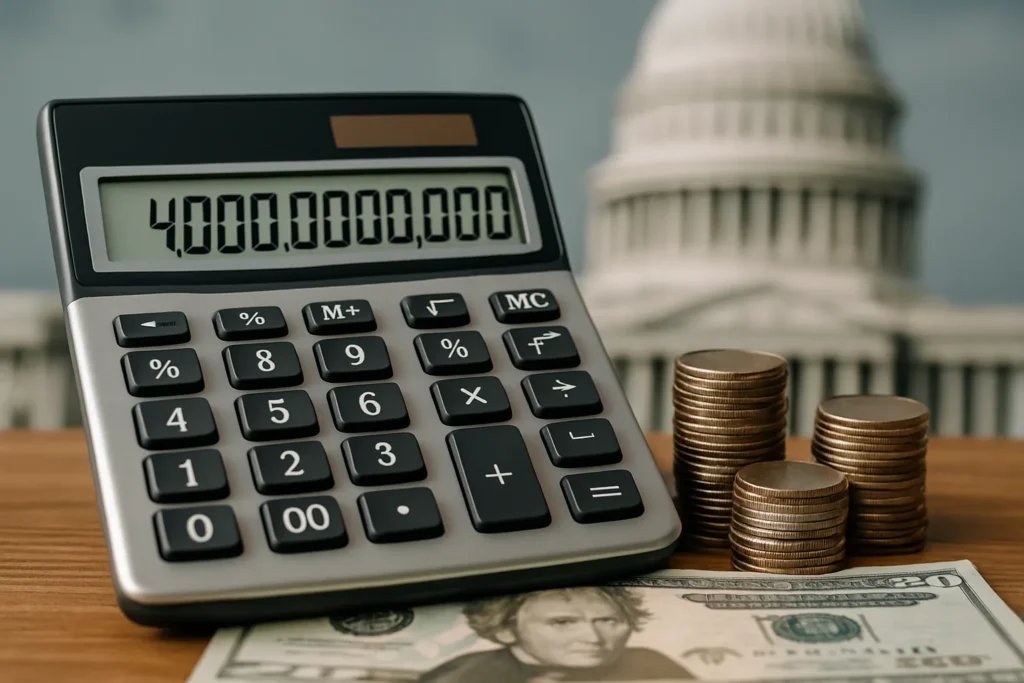Debt Ceiling Dramatics: Political Chess or Economic Recklessness?
Consider the number: $36 trillion. That’s the current U.S. federal debt burden—an incomprehensible sum that forms the backdrop for a new Republican legislative gambit. In May 2025, House Republicans introduced a proposal to hike the nation’s debt ceiling by $4 trillion, weaving it into a larger effort to keep former President Trump’s tax agenda alive. The legislative move—unveiled by the House Ways and Means Committee—stops short of offering genuine bipartisan compromise. Instead, it’s a high-stakes political bet aiming to force through sweeping fiscal policy shifts while skirting Democratic demands and, critics say, responsible budgeting.
The urgency is palpable. Treasury Secretary Scott Bessent issued a dire warning: if Congress doesn’t act by July, the federal government risks default as early as August, conveniently coinciding with the traditional congressional recess. The prospect isn’t academic—reaching that fiscal precipice would have catastrophic consequences, rippling through everything from Social Security payments to global bond markets.
This is no mere procedural tussle; internal Republican fractures have deepened as the proposed ceiling jumps between $4 trillion in the House and $5 trillion in the Senate. At stake are not just numbers, but values—how the country funds Medicaid, tackles long-term deficits, and prepares for looming midterm elections. Senate Republicans, ever the strategists, argue their higher ceiling offers fiscal stability through that volatile period. House conservatives, meanwhile, are less united, with Medicaid reforms and cost-saving ideas sowing division across the aisle.
Wall Street Cheers, Main Street Pauses: The Market Reaction
When political news moves the market, Americans can feel it in their portfolios as well as their paychecks. Investors wasted no time in responding—the S&P 500 rallied 1.5% to reach 5,820, and cryptocurrency traders saw a windfall with Bitcoin shooting to $62,450 and Ethereum up 2.8% to $2,510. Trading volumes soared on Binance, reflecting how financial speculation feeds off government instability, or perhaps just short-term certainty about continued federal largesse.
Such bullishness in risk assets often signals a belief that lawmakers will ultimately avoid the worst-case scenario. Yet, beneath the euphoria lies anxiety. Many investors and analysts recall past debt ceiling fights—from the debt downgrade by S&P after the 2011 standoff, to the stock market’s jitters preceding every fiscal cliff vote. Harvard economist Jane Doe highlights a broader pattern: “Markets react positively in the short term to spending increases or crisis resolution, but the underlying vulnerabilities—ballooning debt, political paralysis—don’t disappear. If anything, they worsen beneath the surface.”
“We cannot keep pushing the envelope on our nation’s credit card and pretend there won’t be consequences. Deficit spending without a coherent plan for growth or equity risks our long-term prosperity and global standing.” — Harvard economist Jane Doe
Observers who watched the trading spikes might ask: why would markets rally in response to even more government borrowing? The answer lies in perceived short-term stability. Inflated asset values aren’t a sign of economic well-being; they’re a reflection of money sloshing through the system, often benefiting the already wealthy and overlooking working families facing rising costs of living.
Debt, Division, and the High Cost of Abstaining From Bipartisanship
Beneath the headlines, a critical reality remains: this $4 trillion debt ceiling increase isn’t only about keeping the lights on in Washington. It’s the latest skirmish in a broader war over who bears the costs—and reaps the rewards—of American fiscal policy. The Republican insistence on linking debt increases to sweeping, regressive tax policies ignores decades of evidence showing that “trickle-down” economics rarely benefits working families or reduces inequality.
Would you stake your retirement or your children’s healthcare on the hope that tax cuts for corporations and the wealthy might one day trickle down? Congressional Democrats emphasize that debt ceiling increases should be clean—untethered to legislative wish lists—because the stakes are too high for political gamesmanship. Historically, attempts to attach policy demands to debt ceiling hikes have only led to last-minute brinkmanship and, in the 2011 episode, a downgrade of U.S. creditworthiness that cost taxpayers billions.
A closer look reveals how these battles often play out at the expense of the most vulnerable. Medicaid reforms touted by some Republicans threaten basic healthcare for millions of low-income Americans. According to a Pew Research study, cuts or restrictions to Medicaid disproportionately harm communities of color and rural areas—regions already suffering from economic stagnation. Social justice is more than a slogan; it’s a question of whether we anchor national prosperity in solidarity or in austerity for the powerless.
Beyond that, the spectacle of legislative infighting and disregard for bipartisan collaboration saps public faith in government’s ability to address real economic disparities. Collective well-being demands stability, not just for Wall Street but for every American who depends on an effective, responsive government.
Bluster over debt ceilings happens in cycles, but the consequences compound. Fiscal responsibility must be paired with equity, transparency, and long-term vision—not just another round of short-term fixes that push problems further down the road for the next Congress or the next generation.

